In the dynamic world of fashion, streetwear has dramatically transformed from its humble beginnings as a casual, everyday style to a major force within high-end fashion. Today, it stands as one of the most popular and widespread fashion trends globally. However, understanding “streetwear” can be challenging due to its vast diversity, encompassing various clothing types and numerous subgenres.
What makes streetwear truly captivating is its global adaptability. Across different regions, it takes on unique characteristics, reflecting local tastes and influences. Whether in the diverse fashion scene of Tokyo, the bustling streets of London, or the vibrant avenues of New York, streetwear manifests uniquely, mirroring its environment. To unravel this fashion phenomenon, we will explore the core types of streetwear, highlighting their defining features, key pieces, and the influential brands that have shaped urban fashion.
This guide aims to demystify the complex world of streetwear, offering a thorough overview that transcends geographical boundaries. Join us as we dive into the diverse styles of streetwear, breaking down the essential elements that define this global fashion movement and celebrating the unique contributions of different cultures to this ever-evolving style.
Explore Streetwear Styles
{{mensmixstreet=”/p/component”}}
What is Streetwear?
Streetwear is a vibrant and influential fashion style that originated from urban streets and subcultures. Distinct for its casual, comfortable, and often sporty aesthetic, it has become a staple for everyday wear. Emerging in the late 20th century, streetwear draws inspiration from skateboarding, hip-hop culture, punk, and athletic wear.
Streetwear is characterized by relaxed silhouettes, bold graphics, and a fusion of high and low fashion. It blurs the lines of traditional fashion, with items like t-shirts, hoodies, sneakers, and baseball caps being essential. What began as an underground movement has now infiltrated mainstream fashion, with luxury brands collaborating with streetwear labels and incorporating streetwear-inspired designs into high fashion runways.
More than just clothing, streetwear is a cultural expression and a form of personal identity. It reflects the diverse tastes of urban youth and continues to grow in global popularity. Evolving over time, it has spawned various subgenres and adapted to the ever-changing fashion and cultural landscape. Today, streetwear is not just a fashion statement; it’s a cultural phenomenon that resonates across generations and geographies.
The Origin of Streetwear
Streetwear’s origins can be traced to the late 20th century in urban centers, particularly in the United States. It began as a response to a need for comfortable, casual clothing that resonated with youth lifestyles and subcultures. The movement emerged from the convergence of skateboarding, hip-hop, punk, and graffiti art.
In the 1970s, skateboarders adopted a distinct style featuring loose-fitting pants, graphic t-shirts, and sneakers for optimal functionality. Simultaneously, hip-hop culture in New York City gained traction, significantly influencing streetwear. Brands like Adidas and Puma became associated with the burgeoning hip-hop scene, blending sportswear with street style.
The 1980s marked the rise of iconic streetwear brands such as Stüssy and Vision Street Wear, instrumental in shaping the movement. These brands were often founded by individuals deeply embedded in the subcultures that inspired streetwear, giving it an authentic and rebellious edge.
As the 1990s progressed, streetwear continued to evolve, incorporating elements from skate culture, music, and art. It transcended its subculture roots and entered mainstream fashion, setting the stage for its current global prominence. Streetwear’s ability to adapt and draw inspiration from diverse sources has been key to its enduring appeal and cultural significance.
Who Invented Streetwear?
The creation of streetwear is a collaborative story, shaped by numerous visionaries who initiated a cultural shift in fashion. Exploring the question of who invented streetwear reveals diverse narratives and influential figures who collectively shaped this dynamic style.
1. James Jebbia
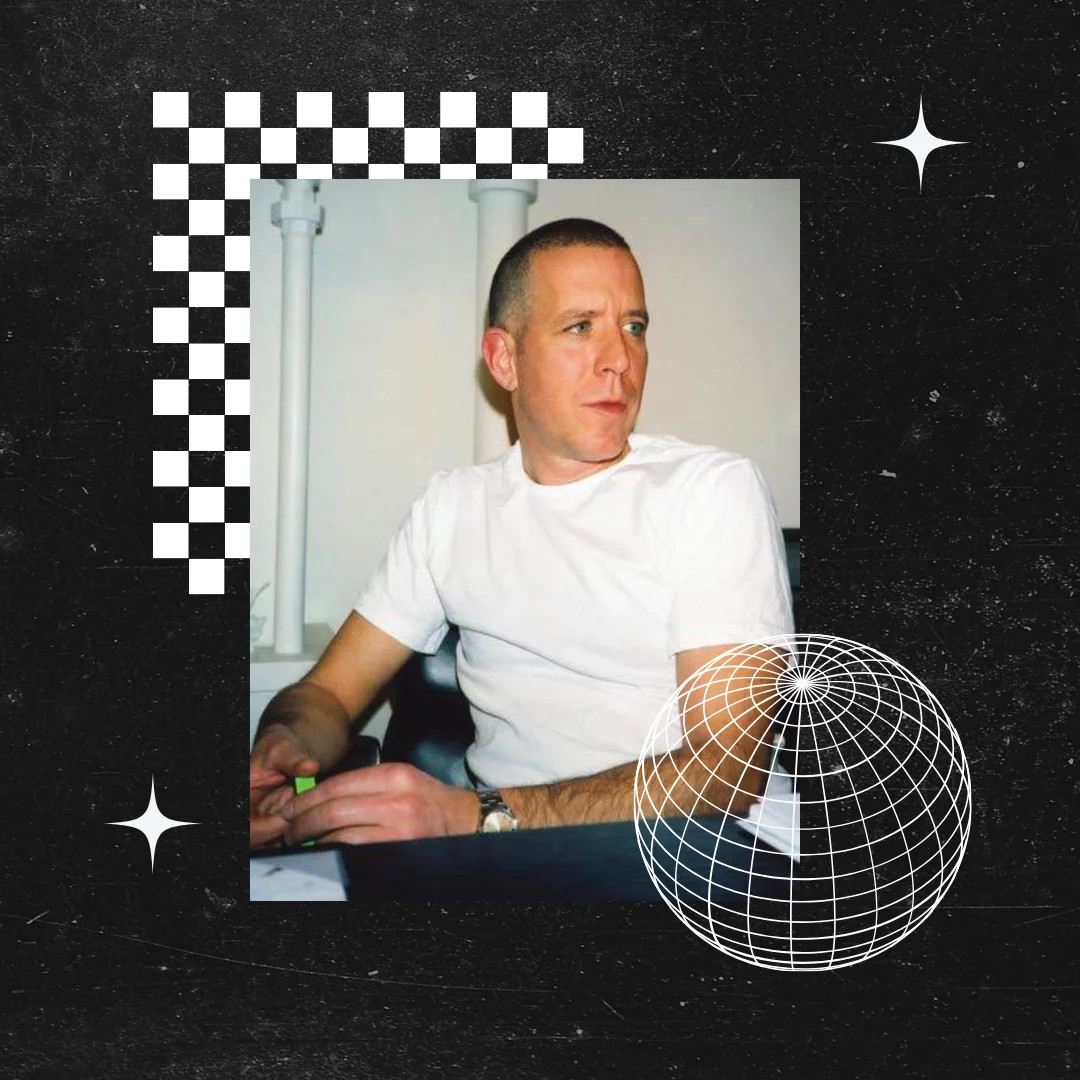 James Jebbia, the founder of Supreme, a key figure in streetwear, standing in a relaxed pose, highlighting the brand's influence on contemporary urban fashion.
James Jebbia, the founder of Supreme, a key figure in streetwear, standing in a relaxed pose, highlighting the brand's influence on contemporary urban fashion.
James Jebbia, the founder and owner of the iconic streetwear brand Supreme, is a pivotal figure in contemporary urban fashion. Founded in 1994, Supreme quickly gained prominence under Jebbia’s leadership, becoming a global cultural phenomenon. Known for its distinctive red and white logo, Supreme is synonymous with limited-edition releases, collaborations with renowned artists and designers, and a dedication to authenticity.
Jebbia’s genius lies in his ability to blend street culture with high fashion, appealing to both skateboarders and fashion enthusiasts. His strategic use of scarcity marketing has built Supreme’s mystique, making each release a highly anticipated event. Under Jebbia’s direction, Supreme has moved beyond its streetwear origins, influencing mainstream fashion, music, and art, and solidifying its status as an enduring symbol of urban cool.
2. Shawn Stüssy
 Shawn Stussy, the founder of Stussy, a pioneer in streetwear, pictured in a casual setting, emphasizing his brand's impact on global street style and its surf and skate culture roots.
Shawn Stussy, the founder of Stussy, a pioneer in streetwear, pictured in a casual setting, emphasizing his brand's impact on global street style and its surf and skate culture roots.
Shawn Stüssy, the creative force behind the celebrated California streetwear label Stussy, is a pioneer who significantly impacted the fashion industry. Starting in 1980 as a surfboard shaper, Stussy’s hand-drawn logo became a symbol of counterculture cool. Recognizing the appeal of his aesthetic, he transitioned to apparel, officially establishing Stussy in 1984.
Stussy’s brand embodied a relaxed, West Coast vibe with global appeal, blending surf, skate, and hip-hop elements. The brand’s success highlights Stussy’s vision, transforming a grassroots movement into a leading international streetwear brand. His dedication to authenticity and originality has cemented Stussy’s position as a cultural touchstone, inspiring generations of streetwear fans and shaping urban fashion worldwide.
3. Dapper Dan
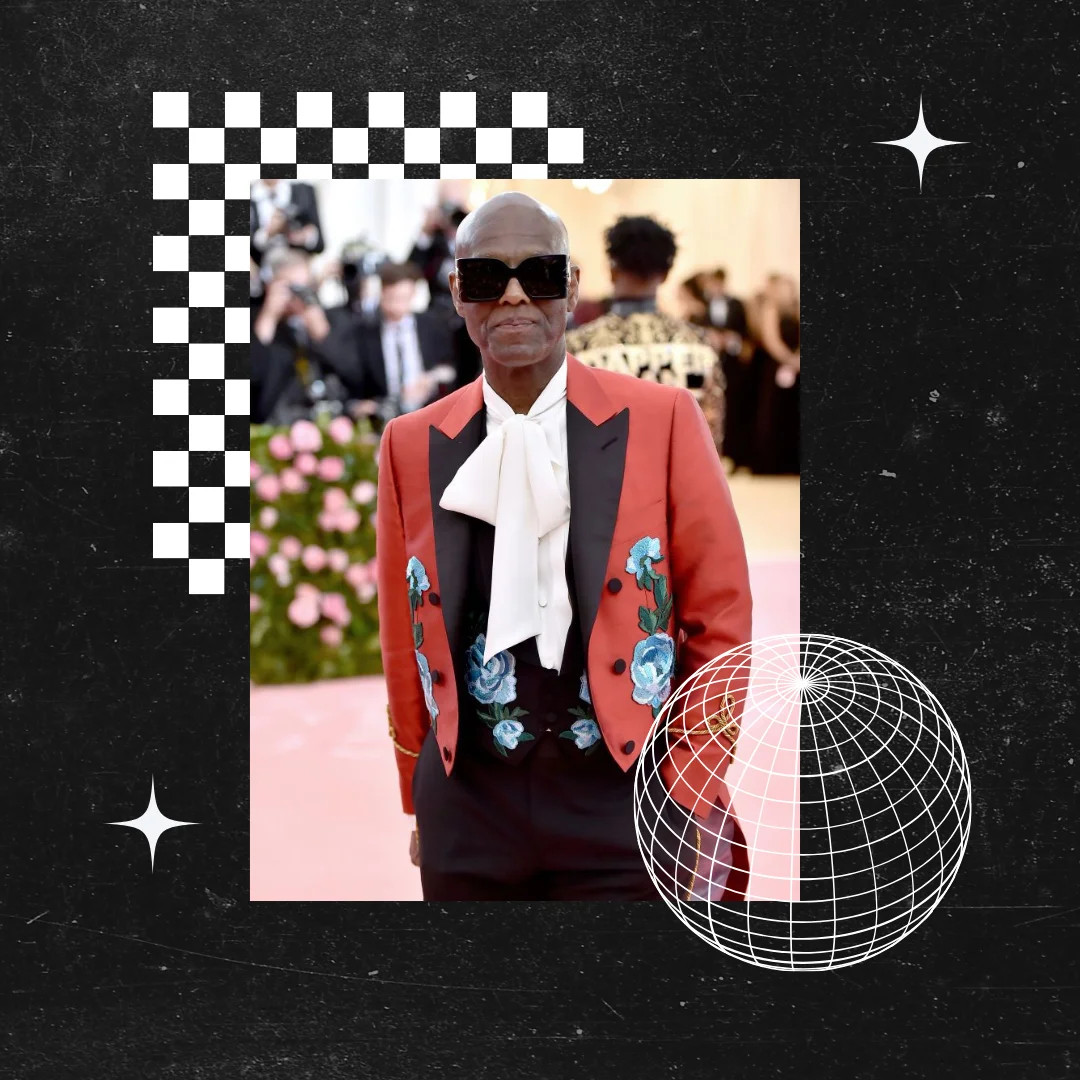 Dapper Dan, a luxury streetwear designer from Harlem, known for his innovative use of high-end brands in streetwear, showcasing his influence on blending luxury fashion with urban style.
Dapper Dan, a luxury streetwear designer from Harlem, known for his innovative use of high-end brands in streetwear, showcasing his influence on blending luxury fashion with urban style.
Dapper Dan, the visionary luxury streetwear designer from Harlem, is a cultural icon celebrated for his unique contributions to fashion. Known for his exceptional craftsmanship and bold designs, Dan has been a pioneer in street-style apparel, notably catering to hip-hop artists and influential figures of color. His atelier, Dapper Dan’s Boutique, became a Harlem landmark in the 1980s, where he expertly merged high-end luxury brands with urban aesthetics.
Dan’s creations were more than just fashion; they were statements of identity and empowerment. Despite initial conflicts with luxury brands over his use of their logos, his designs have ultimately been recognized and embraced by the fashion establishment. Dapper Dan’s legacy is one of resilience and innovation, reshaping luxury perceptions and leaving a lasting mark on the intersection of streetwear and high fashion.
4. Hiroshi Fujiwara
 Hiroshi Fujiwara, often called the "godfather of Ura-Harajuku" fashion, a globally influential streetwear designer, known for his role in shaping Japanese streetwear and his collaborations with major brands.
Hiroshi Fujiwara, often called the "godfather of Ura-Harajuku" fashion, a globally influential streetwear designer, known for his role in shaping Japanese streetwear and his collaborations with major brands.
Hiroshi Fujiwara, often acclaimed as the “godfather of Ura-Harajuku” fashion, is a globally respected streetwear designer and influential cultural figure. Pioneering the Ura-Harajuku movement in the 1980s, Fujiwara developed a distinctive mix of street style, music, and art that broke traditional fashion norms. As the founder of the iconic label Fragment Design, he seamlessly blends Japanese aesthetics with global streetwear trends.
Fujiwara’s influence extends beyond his brand; his collaborations with industry giants like Nike and Louis Vuitton have transformed contemporary fashion. His keen eye for design and cultural curation has established him as a key tastemaker, influencing streetwear’s direction globally. A multifaceted creative force, Hiroshi Fujiwara continues to shape the future of street fashion, leaving a lasting legacy in the ever-evolving world of streetwear style.
Why is Streetwear so Popular?
Streetwear’s rapid surge in popularity is due to a mix of cultural, social, and technological factors that have redefined the fashion landscape. The synergy between hip-hop’s growing popularity in the 2020s and streetwear becoming the preferred style for teenagers and young adults is a prime example. The digital revolution and social media’s pervasive influence have been crucial, empowering urban culture and propelling streetwear to the forefront of fashion trends.
In today’s age of instant communication, social media platforms have become catalysts for the streetwear movement, with influencers playing a significant role. Millions of streetwear enthusiasts constantly exchange outfit inspiration, likes, shares, and reposts. This collective expression shapes fashion trends, with streetwear enthusiasts influencing runway shows and dictating what’s considered fashionable.
Initially dismissed by traditional fashion stylists as lacking taste, streetwear gained legitimacy as high-profile figures in entertainment embraced the style. Celebrities, musicians, actors, and high-status individuals began adopting streetwear looks, prompting stylists to not only acknowledge but actively contribute to the movement. Streetwear, once seen as unconventional, has become a new status symbol, with renowned fashion designers incorporating it into their collections at prestigious fashion weeks.
The evolution of luxury streetwear, with high-end fashion houses like Gucci and Balenciaga entering the scene, highlights streetwear’s complex role in contemporary culture. Designer brands infuse streetwear with symbols of social status, reflecting not just personal style but also income, values, and social standing. This blend of cultural influences, digital connectivity, and high-end endorsements has cemented streetwear as a dynamic and influential force in the constantly evolving fashion world.
Streetwear’s Impact on Pop Culture
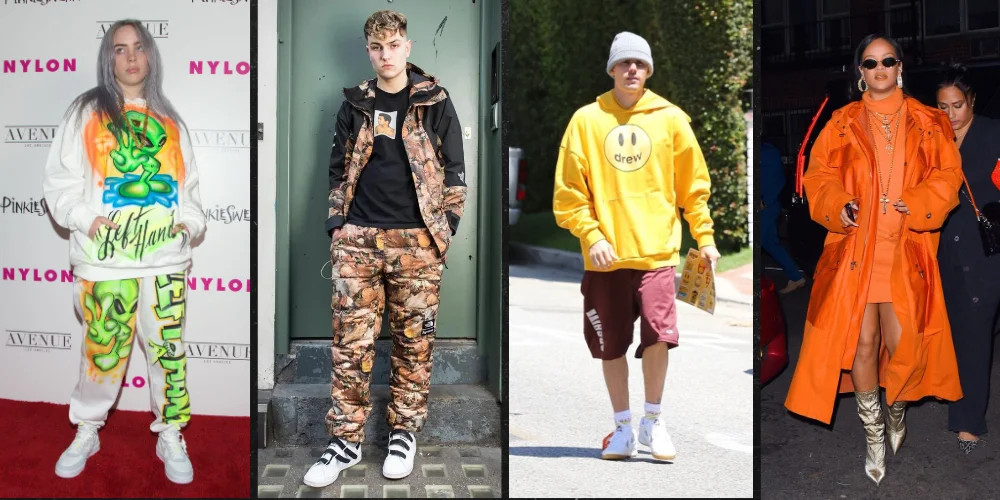 A collage showcasing various celebrities and influencers wearing streetwear, illustrating streetwear's broad appeal and influence on popular culture and fashion trends.
A collage showcasing various celebrities and influencers wearing streetwear, illustrating streetwear's broad appeal and influence on popular culture and fashion trends.
Streetwear’s impact on pop culture is profound, dynamically reflecting global cultural trends. Unlike traditional fashion styles often linked to specific subcultures, streetwear adapts, blending the latest fashion trends with ongoing pop and cultural movements. This reciprocal relationship sees individuals influencing street fashion as much as streetwear shapes and adapts to societal shifts.
A key aspect of streetwear is its inclusivity. It transcends traditional fashion boundaries, being adaptable, gender-neutral, and size-inclusive. It’s a fashion movement created by people for people, crossing age, nationality, gender, and skin color. Streetwear’s broad appeal contributes to its widespread cultural significance.
Historically, hip-hop music and subculture have been vital in shaping streetwear. The iconic styles of 80s hip-hop, featuring tracksuits, white sneakers, bucket hats, and gold chains, continue to influence contemporary streetwear. However, current streetwear extends beyond hip-hop roots, drawing inspiration from diverse subcultures like Goth, Preppy, Punk, and music styles such as African beats and K-pop. This diversity not only reflects contemporary culture’s richness but ensures streetwear remains a dynamic and evolving force in pop culture.
Who Wears Streetwear?
Streetwear has surpassed traditional fashion demographics to become a global phenomenon embraced by a diverse range of people. Originally rooted in urban subcultures and influenced by hip-hop, streetwear now spans generations, appealing to teenagers, young adults, and older fashion enthusiasts. It has seamlessly entered the wardrobes of celebrities, musicians, athletes, and influencers, blurring the lines between high and low culture. Streetwear’s appeal lies in its inclusivity, offering a style unbound by age, gender, nationality, or socioeconomic status.
In recent years, streetwear’s universal appeal has been amplified by its adoption in high-end fashion. Luxury brands collaborating with streetwear labels, and designer interpretations of streetwear aesthetics, have broadened its audience to include fashion connoisseurs appreciating its unique blend of comfort, style, and cultural relevance. Whether it’s youth expressing individuality, celebrities making fashion statements, or fashion-forward individuals seeking comfortable yet edgy style, streetwear has become a sartorial language spoken by a vast and diverse community worldwide.
The 6 Types of Streetwear
Explore the dynamic world of streetwear as we delve into its diverse expressions and distinct types. From the rebellious spirit of Skatewear to the luxury-casual fusion of Hypebeast style, each type embodies a unique aspect of this influential fashion movement.
Whether you’re drawn to the minimalist aesthetics of Techwear or the nostalgic vibes of Vintage streetwear, this exploration reveals the nuances of the streetwear landscape. Join us as we navigate through six intriguing types, each contributing to the vibrant tapestry of self-expression and cultural influence in street fashion.
1. Skatewear
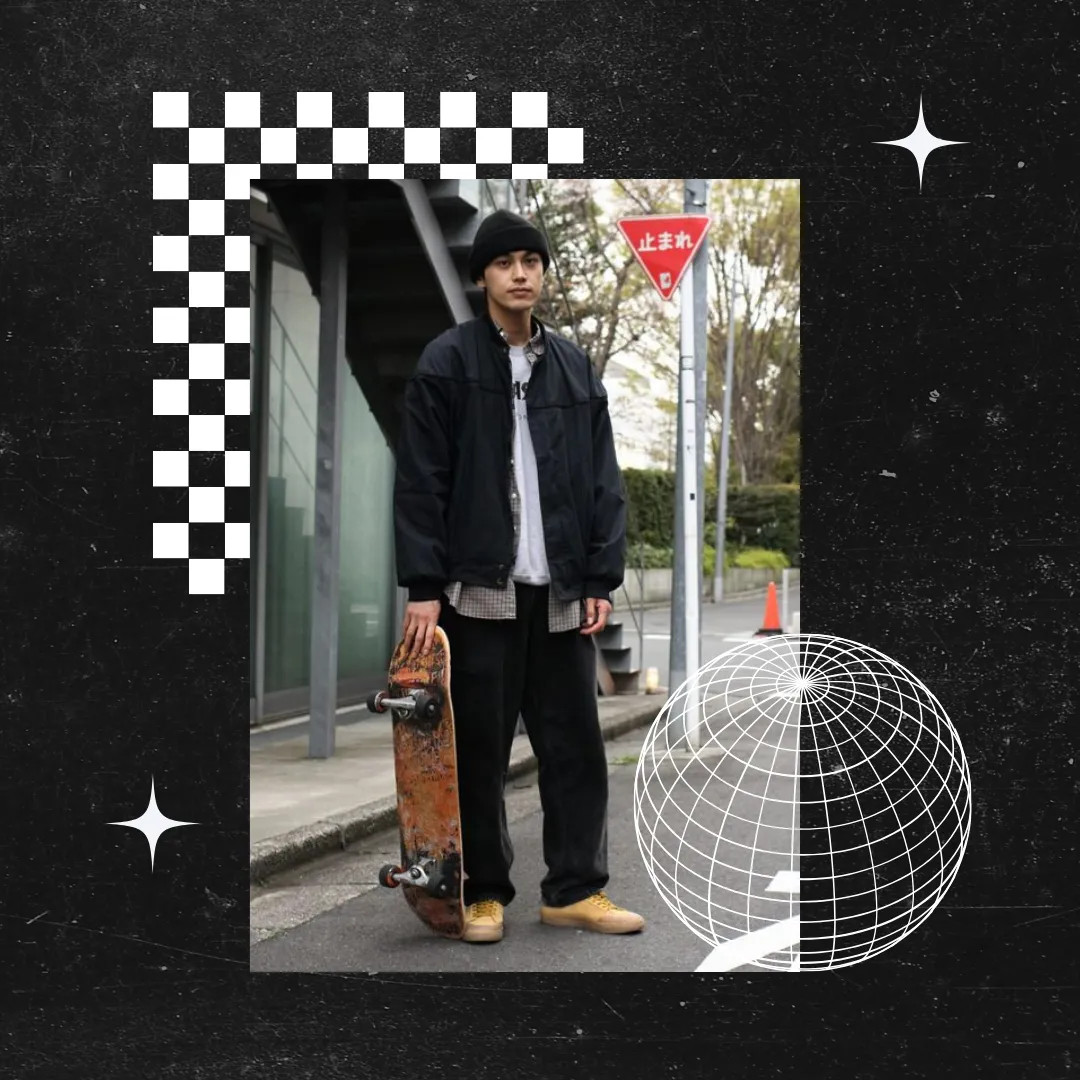 Skatewear style featuring a skateboarder in typical skate attire, including a graphic tee, loose pants, and skate shoes, highlighting the casual and functional aspects of skate fashion.
Skatewear style featuring a skateboarder in typical skate attire, including a graphic tee, loose pants, and skate shoes, highlighting the casual and functional aspects of skate fashion.
Skatewear, born from the rebellious spirit of skateboarders globally, originated in the sunny streets of California, the birthplace of skate culture. Initially influenced by laid-back American surfer style, skatewear centers around casual graphic t-shirts, baseball hats, and shorts. Evolving while maintaining its core principles, this style reflects the Californian summer vibe, emphasizing personalization and a relaxed spirit, in both warm and cold weather.
Skate style is characterized by humor and pop culture references, often seen in graphic tees or slogan baseball caps. The key is a carefree attitude and fun with fashion choices. Iconic brands like Vans and Dickies are synonymous with skatewear, embodying its easygoing yet stylish ethos. Other notable brands include Carhartt, Stussy, and Huf. For a blend of skate and Japanese street style, Tokyo’s X-Large and X-Girl offer a mix of classic skate silhouettes with modern logos and colors. For skate-inspired streetwear inspiration, Thrasher Magazine, the quintessential skate publication, merges skateboarding and fashion, providing endless ideas for enthusiasts.
2. Techwear
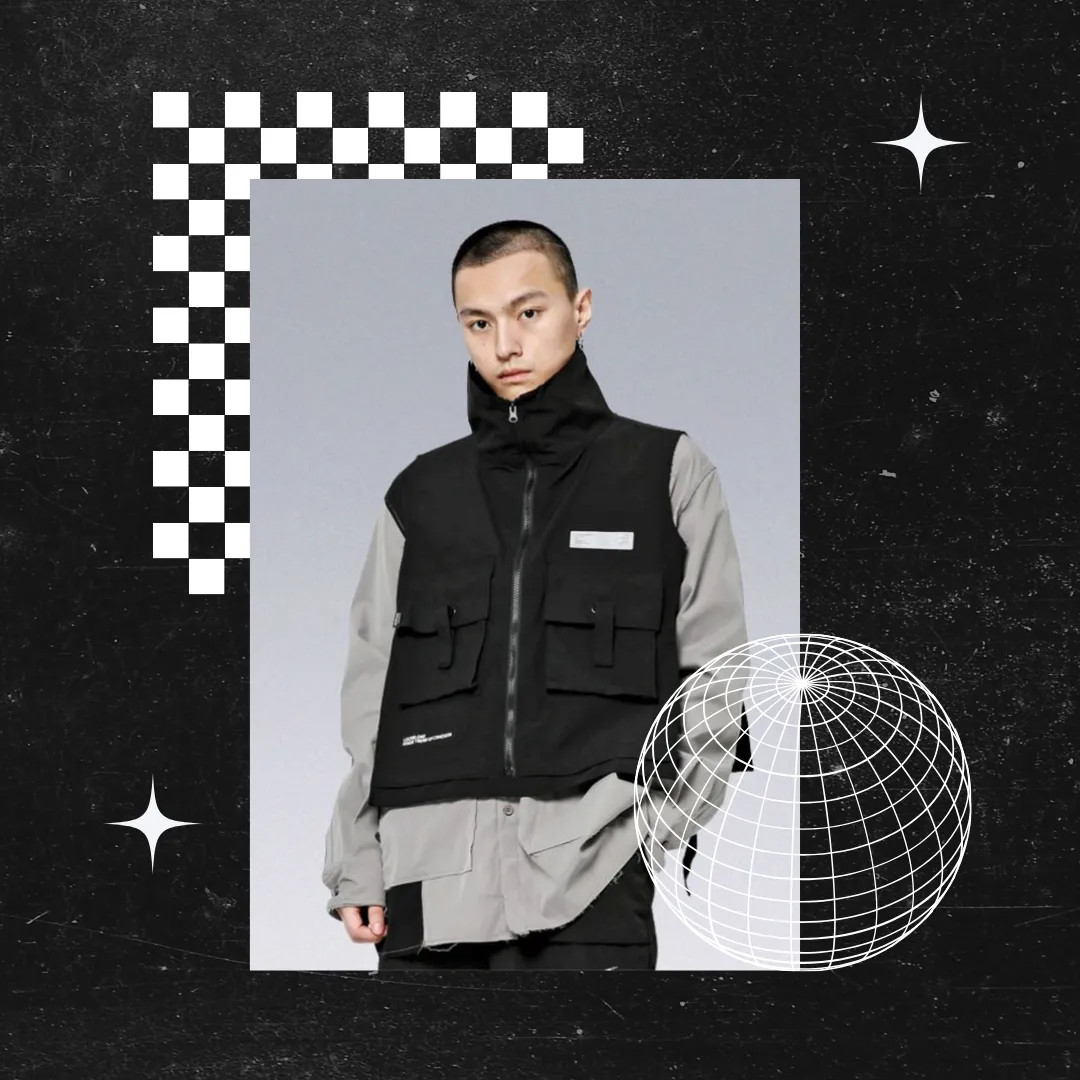 Techwear fashion showcasing a person in futuristic and functional clothing, with a focus on dark colors, utilitarian designs, and advanced materials, representing the blend of technology and style in techwear.
Techwear fashion showcasing a person in futuristic and functional clothing, with a focus on dark colors, utilitarian designs, and advanced materials, representing the blend of technology and style in techwear.
Techwear is a cutting-edge fashion style merging style and functionality, capturing modern aesthetics. This avant-garde trend transforms utilitarian pieces like military vests and cargo pants into sleek, contemporary outfits using luxe fabrics and a modern color palette, often blacks and greys. Rooted in outdoor and sportswear influences, techwear uses silhouettes and materials like technical vests and GORE-TEX, emphasizing high-quality materials, advanced functionality, and a streamlined, modern look. While quality often means higher prices, affordable techwear looks are achievable by focusing on monochromatic palettes, sports-inspired details, and smart shopping.
For budget-friendly techwear basics, retailers like Uniqlo offer a practical starting point with simple yet functional designs. Sporting goods giants like Nike and Adidas, especially in their all-black or minimalist selections, are great for techwear enthusiasts seeking affordable bottoms, backpacks, shirts, and shoes. A key techwear piece is a functional yet stylish jacket, like a hardshell jacket. Though these can be expensive, a budget alternative is layering a thin hoodie under a thrifted windbreaker, capturing the techwear essence affordably.
3. High-Fashion Streetwear
 High-fashion streetwear, featuring models in designer streetwear outfits, blending luxury brand logos with casual streetwear pieces like hoodies and sneakers, highlighting the high-end interpretation of street style.
High-fashion streetwear, featuring models in designer streetwear outfits, blending luxury brand logos with casual streetwear pieces like hoodies and sneakers, highlighting the high-end interpretation of street style.
High Fashion Streetwear, often termed hypebeast culture, is a highly influential style in contemporary street fashion. Championed by hip-hop figures like A$AP Rocky, Kanye West, and Future, it fuses high-end designer logos with streetwear classics like graphic tees, sweatpants, and sneakers. Streetwear’s influence extends to luxury brands like Gucci, Prada, and Balenciaga, all incorporating streetwear aesthetics into their runway looks. Iconic hypebeast labels like Supreme, BAPE with its shark hoodies, and Off-White exemplify this luxury-street fusion.
Celebrity endorsements and hypebeast culture in media outlets like HYPEBEAST and Complex constantly inspire enthusiasts. However, even budget-friendly hypebeast brands like Palace or Supreme can be pricey, sometimes costing thousands. To achieve this trend affordably, avoid overt logos and choose pieces that capture the look without the premium price. Affordable stores like Urban Outfitters, H&M, and thrift stores offer hypebeast-inspired alternatives, allowing enthusiasts to embrace high fashion streetwear without overspending.
4. Original Streetwear
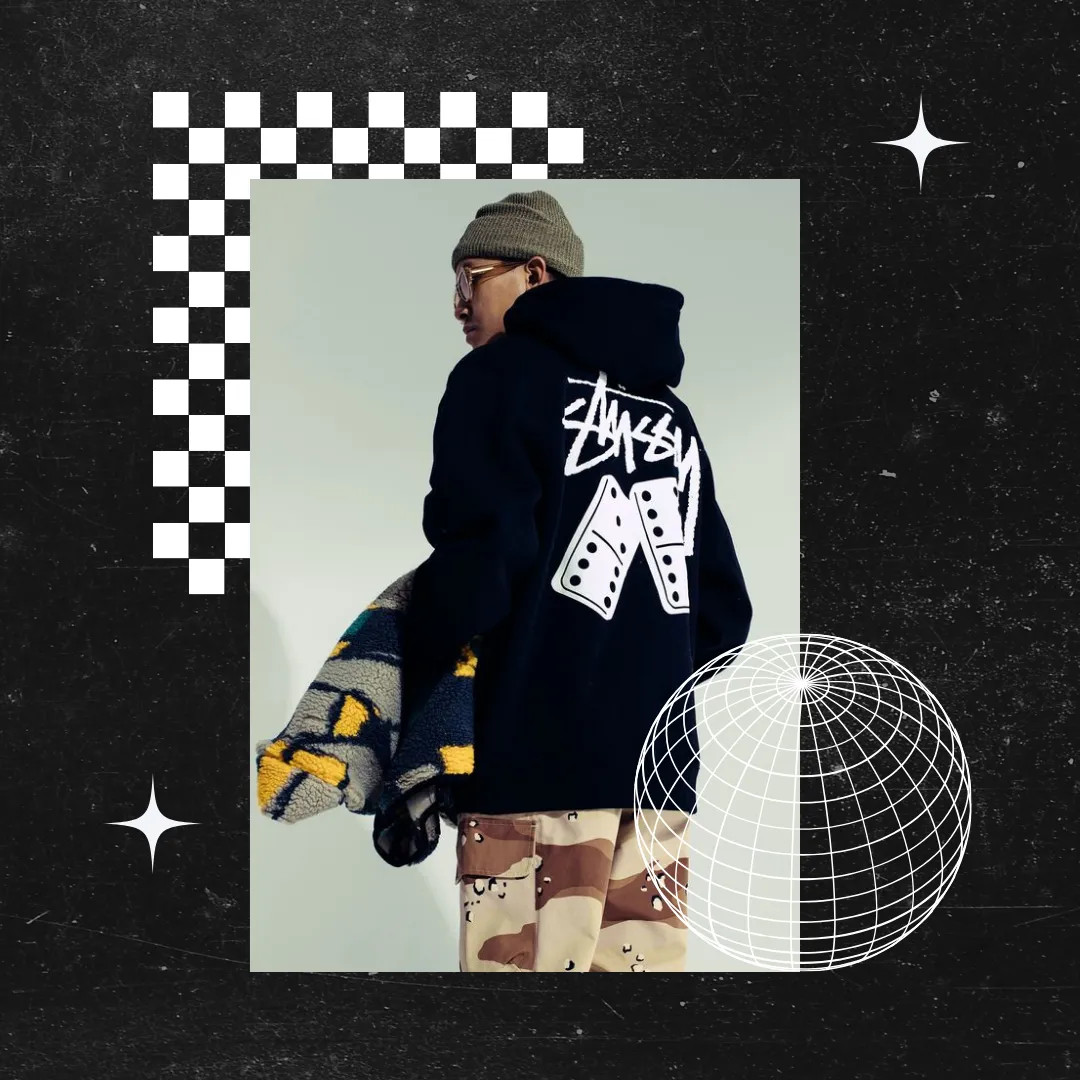 Original streetwear style, showcasing classic pieces from iconic streetwear brands, emphasizing the heritage and foundational elements of the streetwear movement.
Original streetwear style, showcasing classic pieces from iconic streetwear brands, emphasizing the heritage and foundational elements of the streetwear movement.
Original Streetwear, considered the pioneer of the streetwear cultural movement, is defined by iconic brands synonymous with the genre. Often called the O.G.’s of streetwear, key labels include Supreme, Stussy, Palace, B.A.P.E., and Kith. These brands, with their deep history and strong brand recognition, are pillars of the streetwear scene, influencing urban fashion’s very structure.
Original Streetwear is distinguished by its limited and exclusive product releases, creating scarcity and high demand, and fostering anticipation and excitement. This strategy enhances brand appeal and increases resale value, creating a dynamic market for coveted, often rare items. With medium to high price points, Original Streetwear is not just a style but a collector’s culture, where brand authenticity and release scarcity are integral to the streetwear experience.
5. Athleisure-Inspired Streetwear
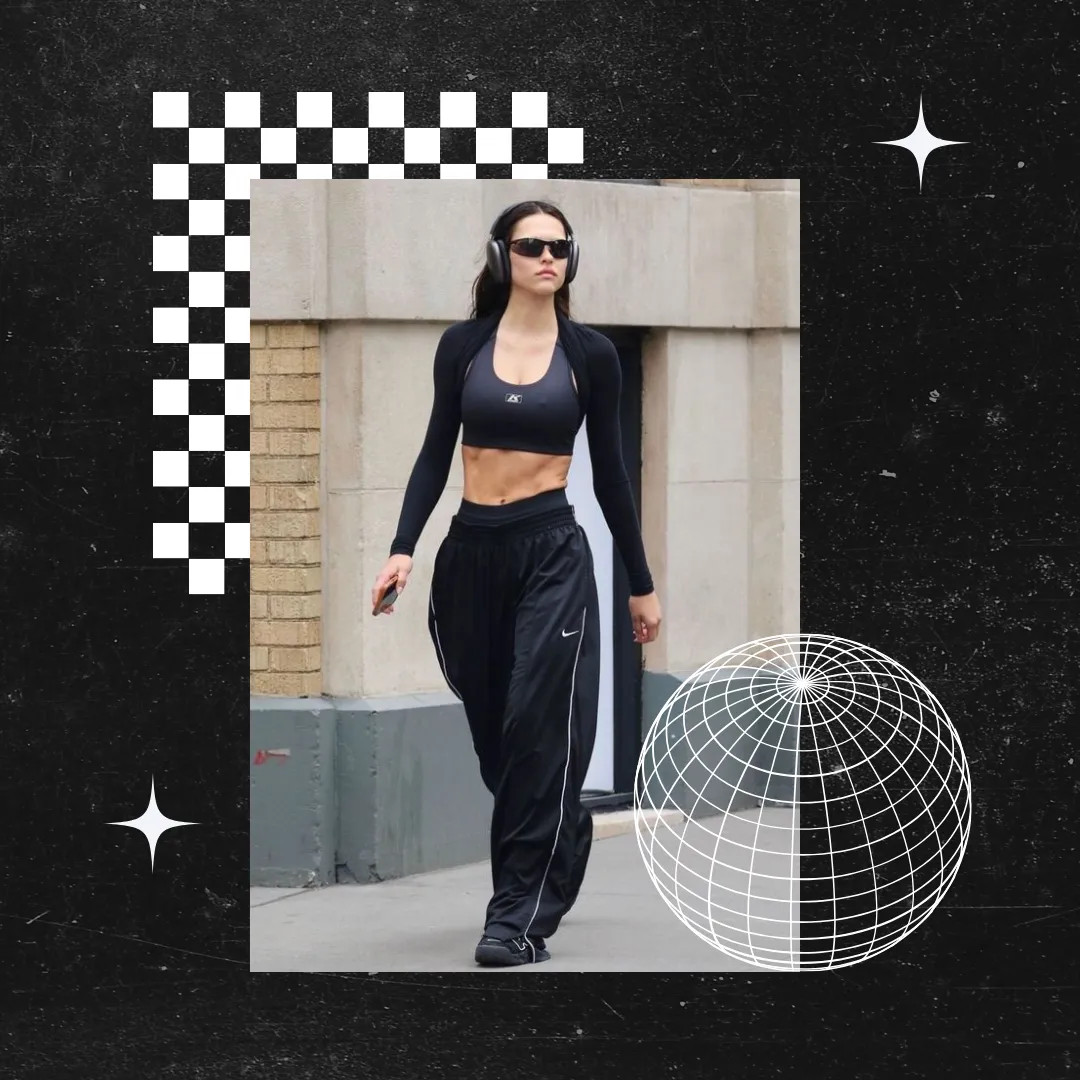 Athleisure-inspired streetwear, featuring an outfit that combines athletic wear with streetwear elements, such as sneakers, joggers, and a stylish jacket, illustrating the comfortable yet fashionable athleisure trend.
Athleisure-inspired streetwear, featuring an outfit that combines athletic wear with streetwear elements, such as sneakers, joggers, and a stylish jacket, illustrating the comfortable yet fashionable athleisure trend.
Athleisure Streetwear blends street fashion and sportswear, sharing a stylistic foundation. This style leverages the combination of comfort and style, where versatile athletic pieces meet urban aesthetics. Sportswear brands are central to Athleisure Streetwear, providing essential outfit components that transition from gym to street. Brands like Nike, Adidas, and Puma are foundational, offering diverse clothing that combines performance with street-ready appeal.
Collaborations between athleticwear brands and celebrities and influencers have propelled Athleisure Streetwear to fashion prominence. These partnerships extend beyond performance apparel, influencing streetwear-inspired designs and promotions. The result is a blend of functionality and fashion, integrating activewear into everyday wardrobes. Athleisure Streetwear embodies a dynamic approach to casual dressing, providing an effortlessly cool and comfortable style that resonates with those seeking a blend of athleticism and urban fashion in daily wear.
6. Mainstream Streetwear
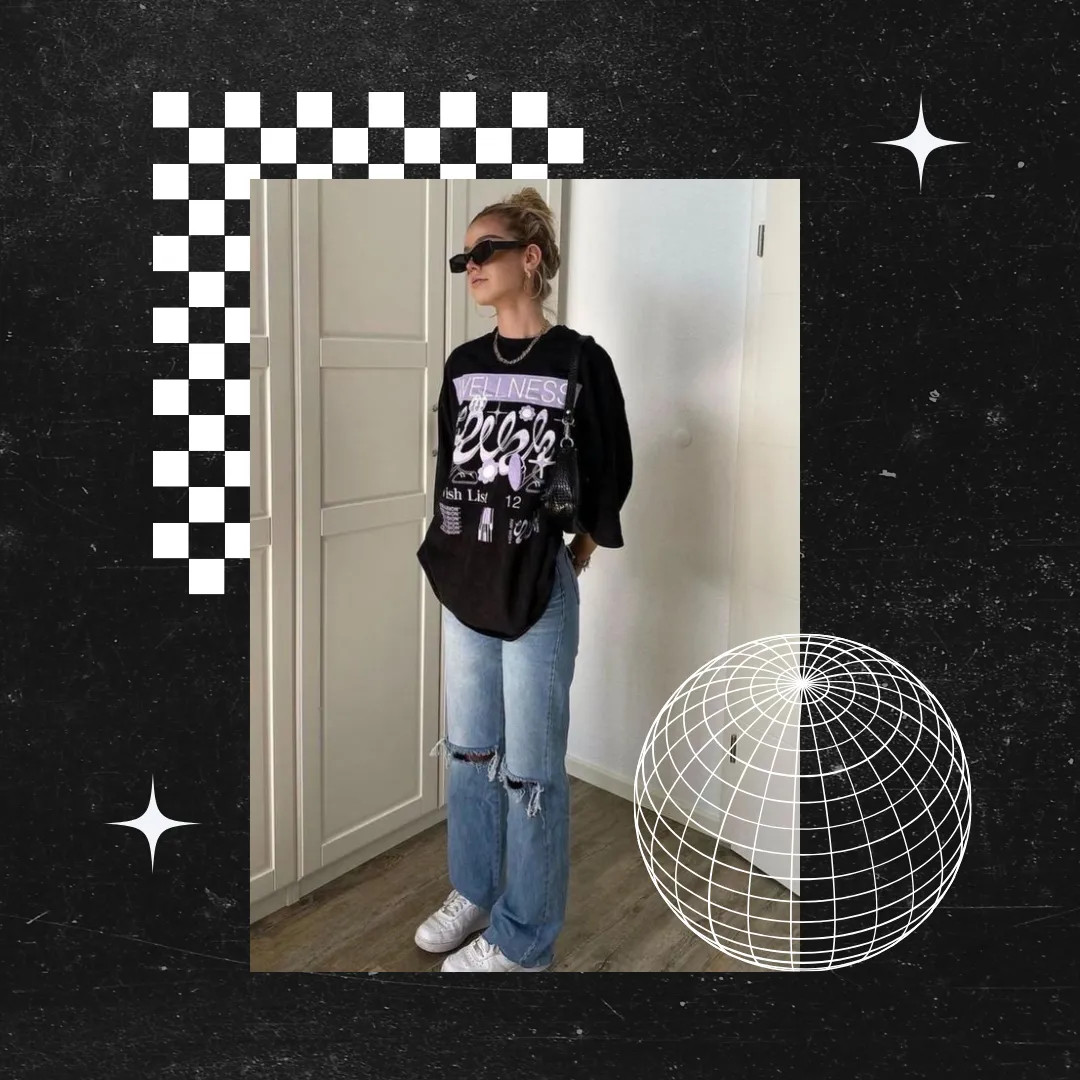 Mainstream streetwear, displaying accessible and trendy streetwear outfits from fast-fashion brands, highlighting the affordability and widespread availability of mainstream streetwear styles.
Mainstream streetwear, displaying accessible and trendy streetwear outfits from fast-fashion brands, highlighting the affordability and widespread availability of mainstream streetwear styles.
Mainstream Streetwear, the newest streetwear category, features affordable brands that, while lacking traditional street fashion backgrounds, have embraced the trend for its commercial appeal. This category often includes creations from fast-fashion retailers replicating high-end luxury streetwear aesthetics. These brands, though without the historical depth of traditional streetwear names, offer a fresh and accessible perspective.
Driven by consumer demand for trendy and budget-friendly options, mainstream streetwear caters to a broad audience, making fashion-forward styles widely accessible. The democratization of streetwear through mainstream brands expands its reach and diversifies the overall streetwear landscape. While some purists may debate authenticity, mainstream streetwear reflects the fashion industry’s dynamic nature, where trends are quickly adopted by brands seeking to capture contemporary style.
5 Most Popular Streetwear Brands
Explore the leading streetwear brands that define the current fashion scene. From Stüssy’s skateboarding roots embodying laid-back West Coast vibes, to Off-White’s high-fashion street style bridging luxury and streetwear under Virgil Abloh’s vision, these brands represent streetwear’s evolution. These top five brands encapsulate a cultural movement where graphic tees, bold logos, and diverse influences redefine modern fashion.
1. A Bathing Ape
 A Bathing Ape website homepage on a computer screen, showcasing the brand's vibrant and graphic-heavy online presence, reflecting its iconic status in streetwear and its Harajuku origins.
A Bathing Ape website homepage on a computer screen, showcasing the brand's vibrant and graphic-heavy online presence, reflecting its iconic status in streetwear and its Harajuku origins.
A Bathing Ape, or Bape, a cornerstone of streetwear, was created by Nigo in Harajuku. Known for its vibrant graphics and distinctive typography, Bape has become a symbol of bold urban fashion. Nigo’s influence led him to become artistic director at Kenzo in 2021, bringing his unique aesthetic to the brand.
For over three decades, A Bathing Ape has built a dedicated global following, including figures like Pharrell Williams and The Weeknd. The brand’s appeal extends beyond fashion, with collaborations including Comme des Garçons and SpongeBob SquarePants. Bape remains a leader in streetwear innovation, continually shaping the urban fashion landscape.
[
View this post on Instagram](https://www.instagram.com/p/C06w3BkrIX8/?utm_source=ig_embed&utm_campaign=loading)[A post shared by A BATHING APE® (@bape_us)](https://www.instagram.com/p/C06w3BkrIX8/?utm_source=ig_embed&utm_campaign=loading)
2. Stüssy
 Stussy website homepage on a computer screen, displaying the brand's cool and laid-back aesthetic, reflecting its skate and surf culture origins and its resurgence in contemporary streetwear.
Stussy website homepage on a computer screen, displaying the brand's cool and laid-back aesthetic, reflecting its skate and surf culture origins and its resurgence in contemporary streetwear.
In 1991, California surfer Shawn Stussy and retail expert James Jebbia in New York founded Stüssy, a skate brand that became a streetwear icon. This partnership set the stage for Supreme’s creation, linking these two influential figures. Stüssy initially appealed beyond skate culture, attracting figures in fashion, music, and art, pioneering unique cross-promotion and exclusivity.
Despite a dip in popularity in the late 2000s due to over-expansion, Stüssy has revitalized its brand. Today, Stüssy is a symbol of excitement and coolness, resonating with its dedicated following and attracting new streetwear enthusiasts. The brand’s journey highlights its lasting impact on streetwear culture.
[
View this post on Instagram](https://www.instagram.com/p/Ct1ymEDrOp9/?utm_source=ig_embed&utm_campaign=loading)[A post shared by Stüssy (@stussy)](https://www.instagram.com/p/Ct1ymEDrOp9/?utm_source=ig_embed&utm_campaign=loading)
3. Supreme
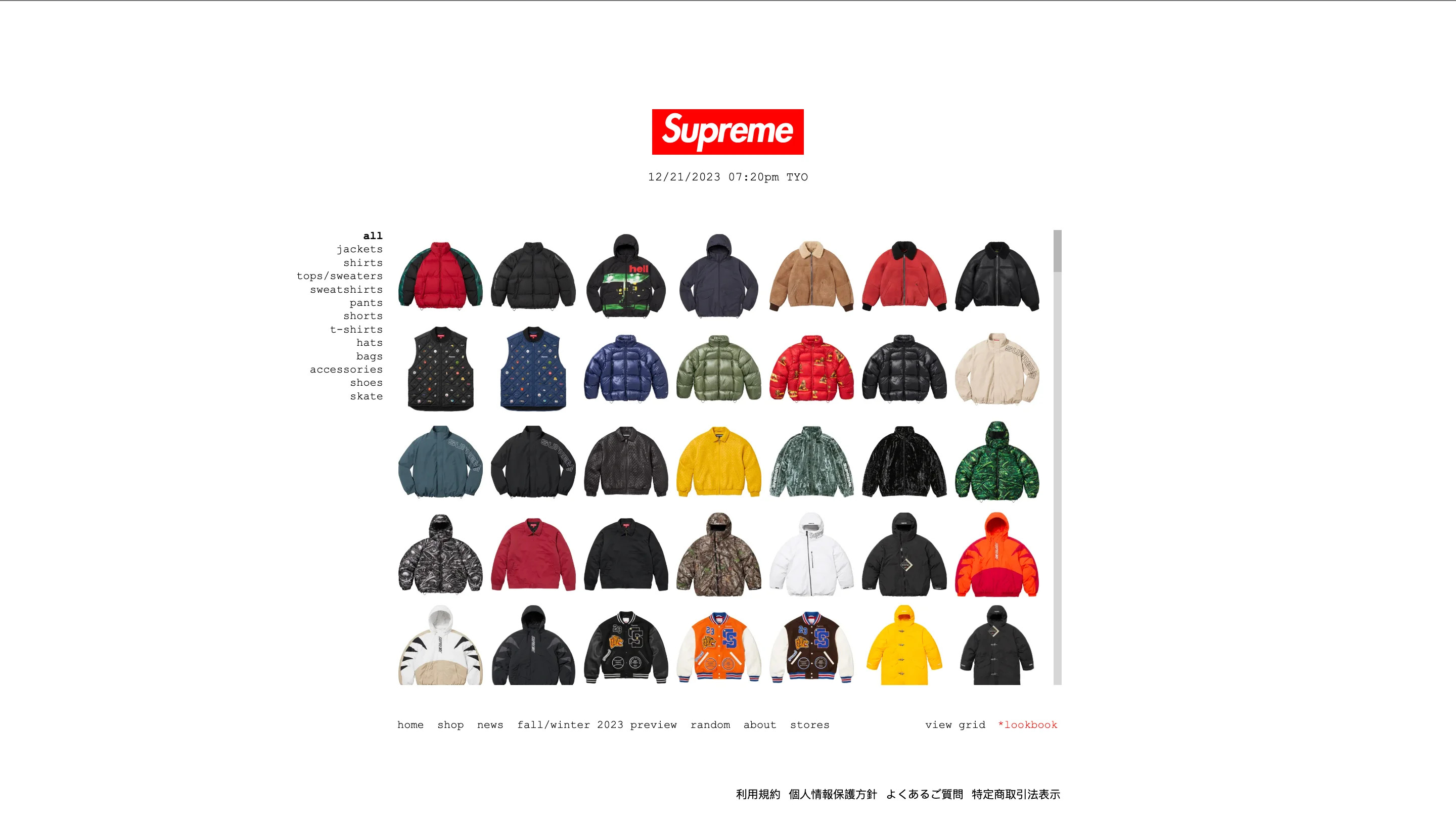 Supreme website homepage on a computer screen, featuring its minimalist design and iconic red and white logo, representing its influential role in shaping modern streetwear and its exclusive brand image.
Supreme website homepage on a computer screen, featuring its minimalist design and iconic red and white logo, representing its influential role in shaping modern streetwear and its exclusive brand image.
Supreme began as a small boutique on Lafayette Street, catering to skaters and downtown trendsetters. Its irreverent designs and simple retail experience created a unique appeal that expanded beyond New York. Supreme rose to the top of fashion, creating a coveted cool brand that is admired across the industry.
Supreme significantly shaped modern streetwear, becoming a cultural force inspiring many imitators. Its impact rivals industry giants like Ralph Lauren, with Supreme fostering influential alumni. Today, Supreme is the epitome of streetwear, a leader in both streetwear and the wider fashion industry. The Supreme logo remains a powerful symbol of cool in fashion.
[
View this post on Instagram](https://www.instagram.com/p/C0wWuDLL3wp/?utm_source=ig_embed&utm_campaign=loading)[A post shared by Supreme (@supremenewyork)](https://www.instagram.com/p/C0wWuDLL3wp/?utm_source=ig_embed&utm_campaign=loading)
4. Palace
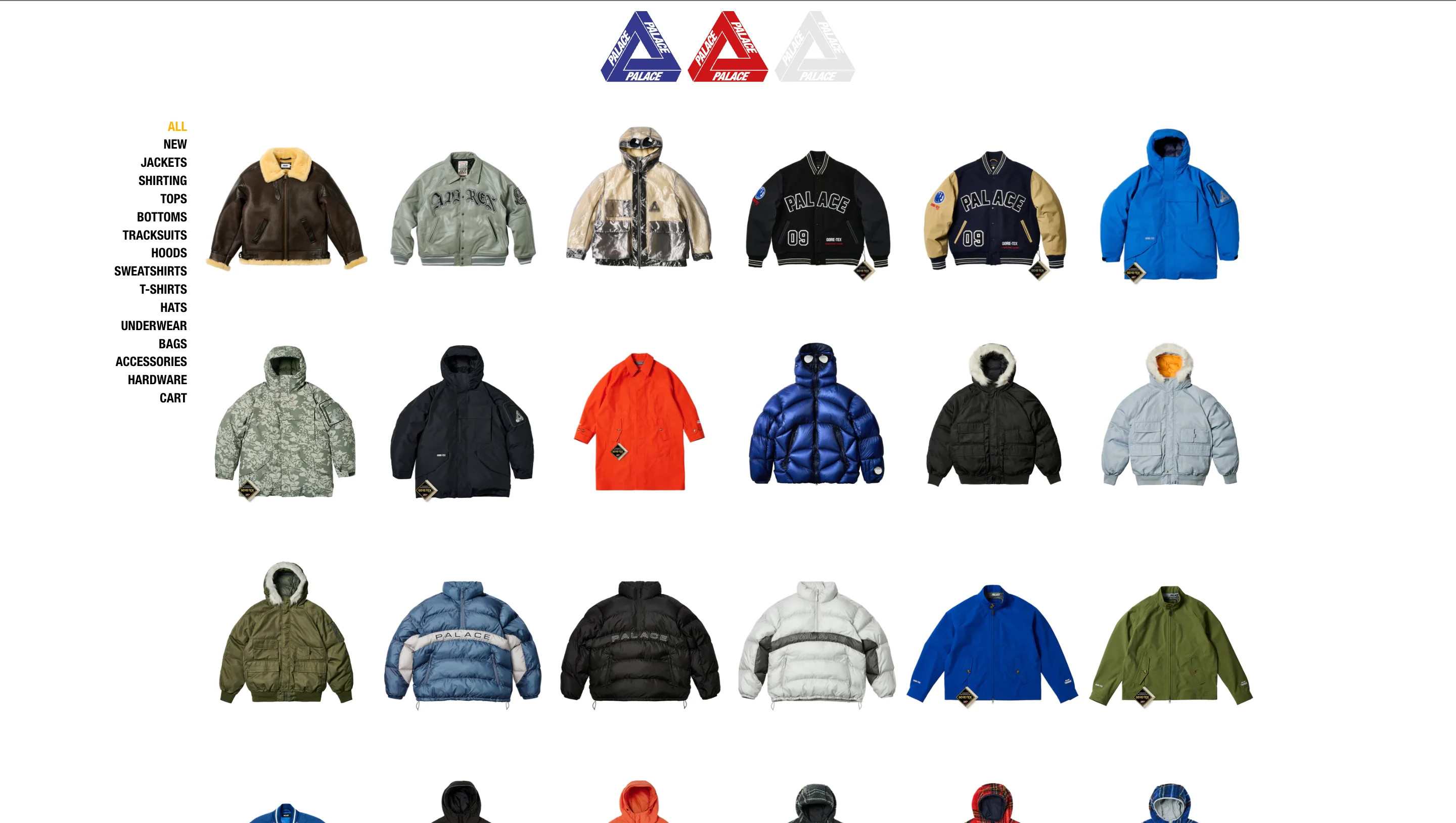 Palace website homepage on a computer screen, showcasing its skate-inspired designs and the distinctive Triferg logo, reflecting its British origins and its global influence in the streetwear scene.
Palace website homepage on a computer screen, showcasing its skate-inspired designs and the distinctive Triferg logo, reflecting its British origins and its global influence in the streetwear scene.
Palace, while sometimes seen as the British Supreme, has its own distinct identity rooted in its stylistic heritage. Though Supreme was an early US retailer to recognize Palace, the British brand’s creative spirit comes from skateboarding enthusiasts nostalgic for a specific era.
Palace has become a global phenomenon with a dedicated following, known for quirky product descriptions by co-founder Lev Tanju and unconventional collaborations. Similar to Supreme, Palace has an instantly recognizable logo, the Triferg, a three-dimensional triangle. Palace’s ability to sell out large quantities quickly solidifies its status as a cultural force and a key influence in streetwear.
[
View this post on Instagram](https://www.instagram.com/p/CxVsUBjtrja/?utm_source=ig_embed&utm_campaign=loading)[A post shared by PALACE (@palaceskateboards)](https://www.instagram.com/p/CxVsUBjtrja/?utm_source=ig_embed&utm_campaign=loading)
5. Off-White
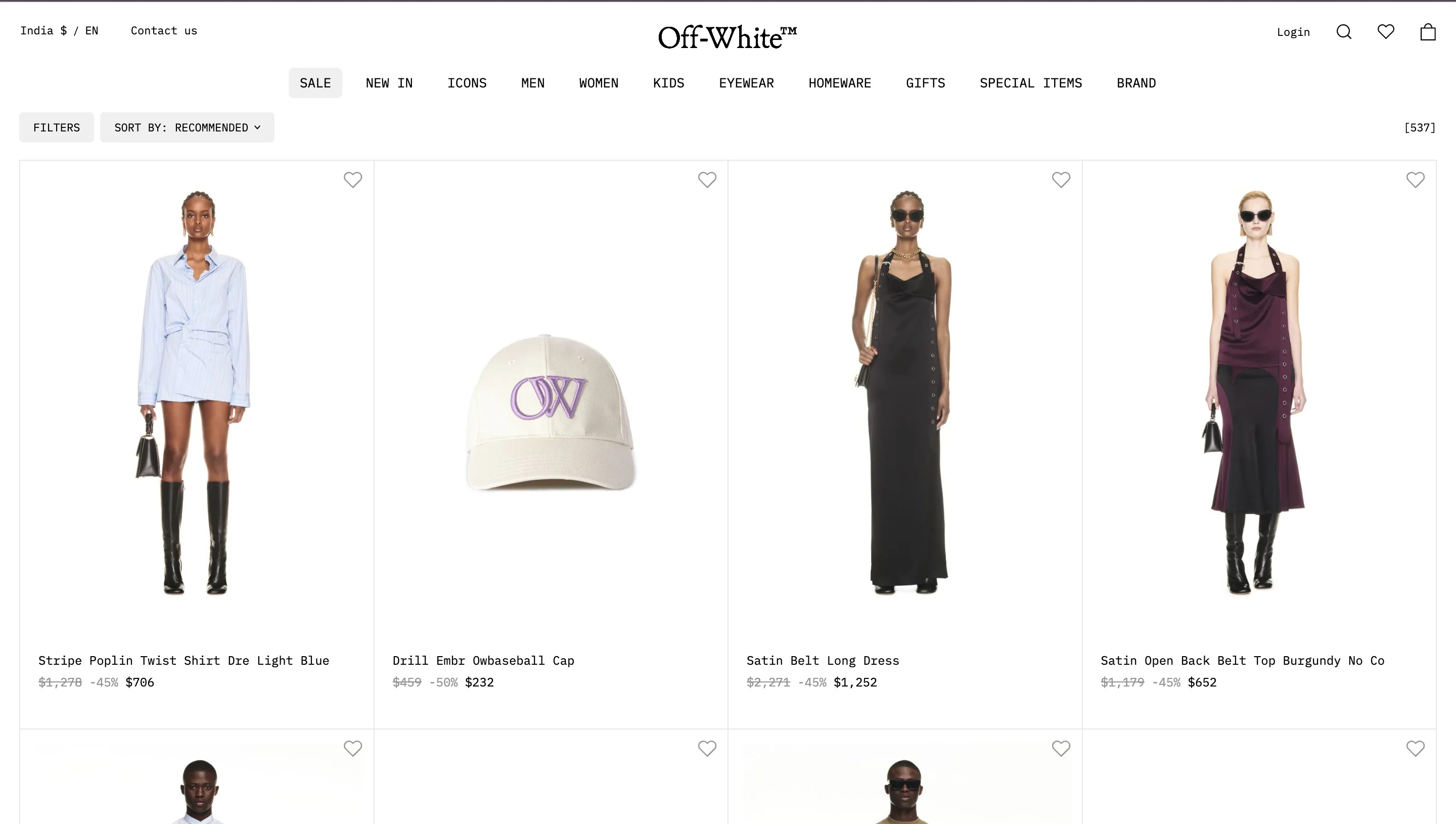 Off-White website homepage on a computer screen, displaying its high-fashion streetwear aesthetic and signature diagonal stripes, representing Virgil Abloh's vision and the brand's impact on luxury streetwear.
Off-White website homepage on a computer screen, displaying its high-fashion streetwear aesthetic and signature diagonal stripes, representing Virgil Abloh's vision and the brand's impact on luxury streetwear.
Off-White, created by the late Virgil Abloh, bridges high fashion and streetwear. Abloh envisioned Off-White as a dialogue between art, fashion, music, and luxury, adding an intellectual layer to streetwear. The brand name symbolizes the gray area between black and white, reflecting Abloh’s vision.
Off-White has profoundly impacted fashion, introducing innovative designs and placing streetwear in new contexts. The diagonal stripes and bold typography are iconic to Off-White. Each piece, from graphic tees to accessories, exudes urban sophistication, making Off-White a symbol of contemporary fashion. The brand’s collaborations and fearless approach to style continue to redefine modern streetwear.
[
View this post on Instagram](https://www.instagram.com/p/C06-H-8NkDc/?utm_source=ig_embed&utm_campaign=loading)[A post shared by Off-White™ (@off____white)](https://www.instagram.com/p/C06-H-8NkDc/?utm_source=ig_embed&utm_campaign=loading)
FAQs
What are the different types of street clothes?
Streetwear includes diverse clothing reflecting urban and youth culture. Graphic t-shirts are essential, often with bold designs or logos. Hoodies and sweatshirts, often oversized and graphic, offer comfort and style. Denim jackets and jeans are versatile streetwear staples.
Sneakers are crucial, with iconic styles from various brands. Caps and beanies add a streetwise touch. Track pants and joggers are popular, blending comfort and style. Skateboard and logo deck accessories like backpacks show skate culture influence.
What type of streetwear is there?
Streetwear styles are diverse, reflecting urban culture and individual expression:
Casual Streetwear: Comfortable, relaxed clothing like oversized t-shirts, hoodies, and joggers, with a laid-back vibe.
Hypebeast Streetwear: Limited-edition, sought-after releases, often collaborations, focused on exclusivity and hype.
Skatewear: Functional and durable, rooted in skate culture, including baggy pants, graphic tees, and skate shoes.
Techwear: Functional and futuristic, merging fashion and technology with waterproof fabrics and utility designs.
Athleisure: Blending athletic and leisurewear, featuring sportswear-inspired clothing like leggings and joggers for everyday wear.
Retro Streetwear: Inspired by past decades, embracing vintage aesthetics from the ’80s, ’90s, and early 2000s.
Minimalist Streetwear: Simple and clean, focusing on essential pieces with understated designs and monochromatic colors.
What is street style clothing called?
Street style clothing is commonly called “streetwear.” Streetwear is a fashion genre rooted in urban culture, self-expression, and diverse influences like skateboarding and hip-hop. It’s known for casual, comfortable, stylish elements suitable for everyday wear. “Street style” can also describe fashion seen in street fashion photography, showcasing diverse urban looks emphasizing individuality and creativity. Streetwear reflects urban fashion’s dynamic, evolving nature.
Is streetwear a luxury?
Streetwear spans affordable and luxury segments. Originating as a countercultural movement, it now includes luxury streetwear brands merging high fashion with street style.
In its accessible form, streetwear is casual and affordable. Luxury streetwear involves high-end collaborations and limited releases with premium materials and prices, blurring lines between luxury fashion and streetwear, with brands like Off-White and Supreme leading this trend.
Is streetwear an aesthetic?
Yes, streetwear is an aesthetic and a fashion genre, characterized by a distinct visual style and attitude. It combines casual, comfortable, often oversized clothing with bold graphics and logos. Key elements include:
Graphic Elements: Bold graphics, logos, and artwork conveying messages or brand identity.
Casual Comfort: Relaxed style with hoodies, t-shirts, joggers, and sneakers.
Mix of Influences: Inspiration from subcultures like skateboarding, hip-hop, and punk.
Youthful Vibes: Reflecting youth culture, rebellion, and individuality.
Limited Editions: Exclusivity and hype from limited releases.
Global Appeal: Incorporating diverse cultural influences globally.
Streetwear is a visual language expressing lifestyle, subculture connection, and self-expression, influencing fashion, art, music, and youth culture.
What are the current trends in streetwear?
As of early 2023, prominent streetwear trends included:
Oversized Silhouettes: Baggy fits, wide-leg pants, and oversized outerwear.
Athleisure Influence: Fusion of athletic and leisurewear, sporty elements in everyday outfits.
Logomania: Bold logos and branding, highlighting luxury streetwear influence.
Sustainability: Eco-friendly and ethical streetwear options, recycled materials.
Techwear Elements: Technical fabrics, utility designs, and futuristic aesthetics.
Y2K Nostalgia: Resurgence of early 2000s styles like cargo pants and graphic prints.
Gender Fluidity: Gender-neutral designs, promoting inclusivity.
DIY and Customization: Personalization, hand-painted elements, and unique touches.
About the author
 Anuri Phatak, Lead Writer at streetsounds.net, smiling and looking confidently at the camera, representing her expertise in fashion, beauty, and pop culture writing.
Anuri Phatak, Lead Writer at streetsounds.net, smiling and looking confidently at the camera, representing her expertise in fashion, beauty, and pop culture writing.
By Anuri Phatak
Lead Writer
If Carrie Bradshaw and Ricky Gervais had a love child raised by the cast of “The Devil Wears Prada”, you’d get Anuri. She loves to write about fashion, beauty, pop culture & lifestyle. When she isn’t writing for The Closet, she is nose-deep in a book.

